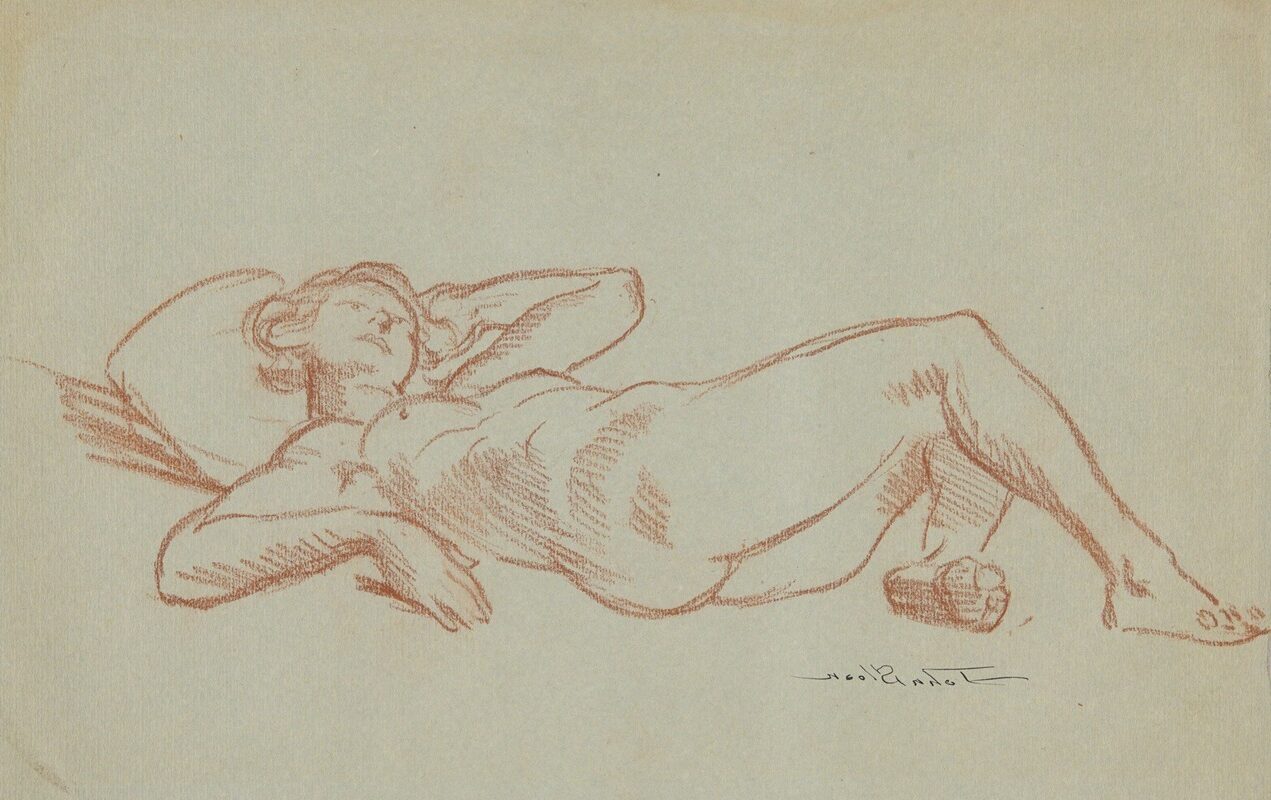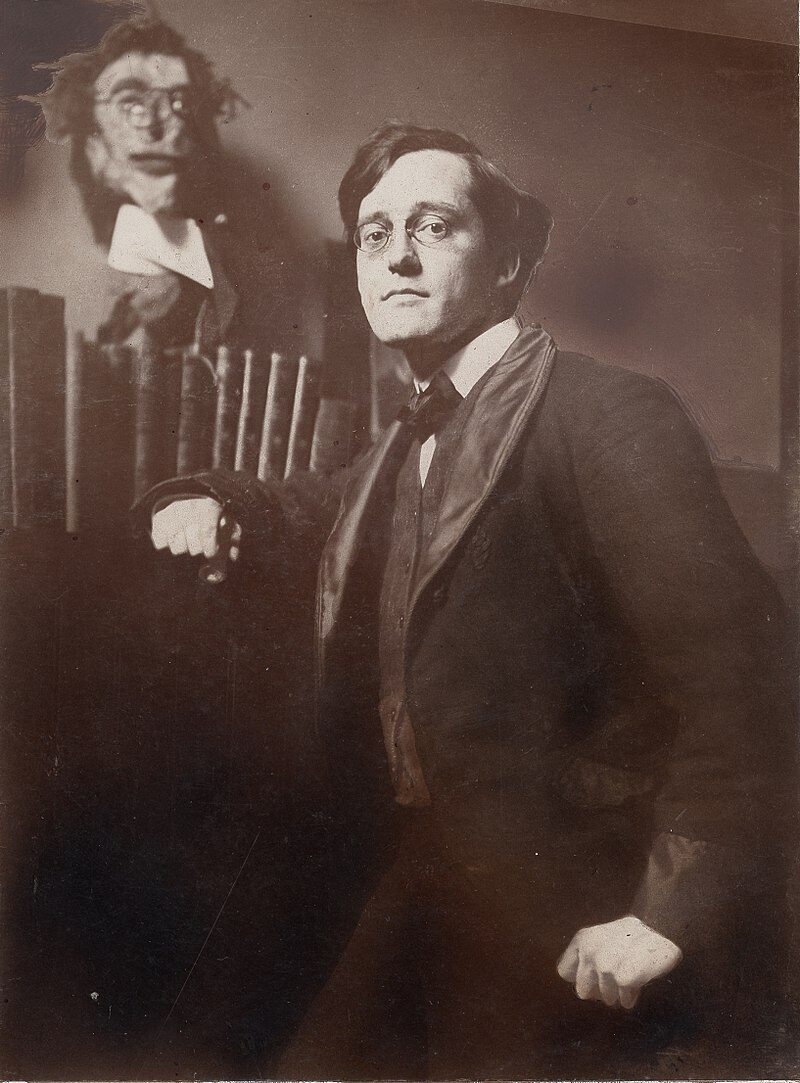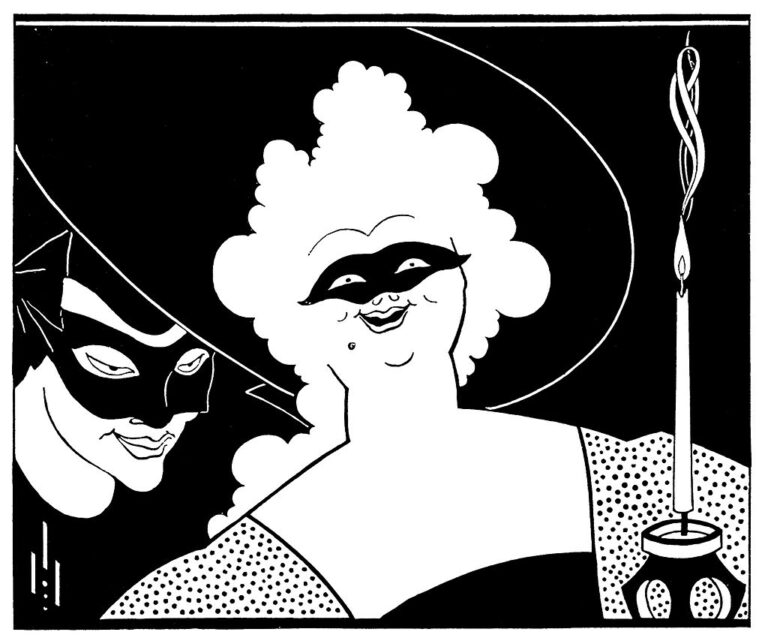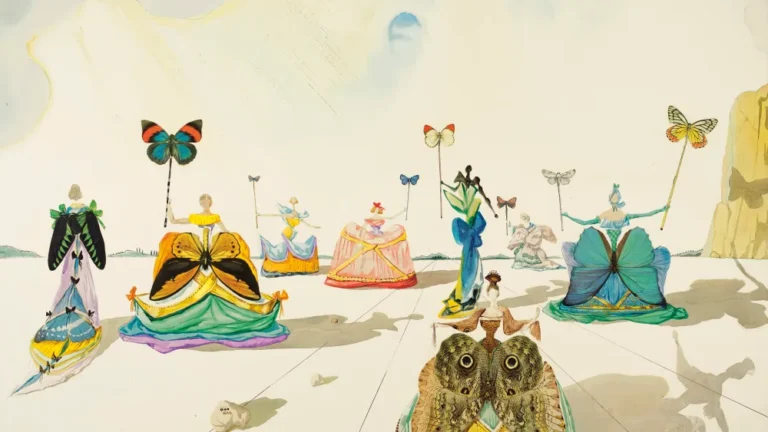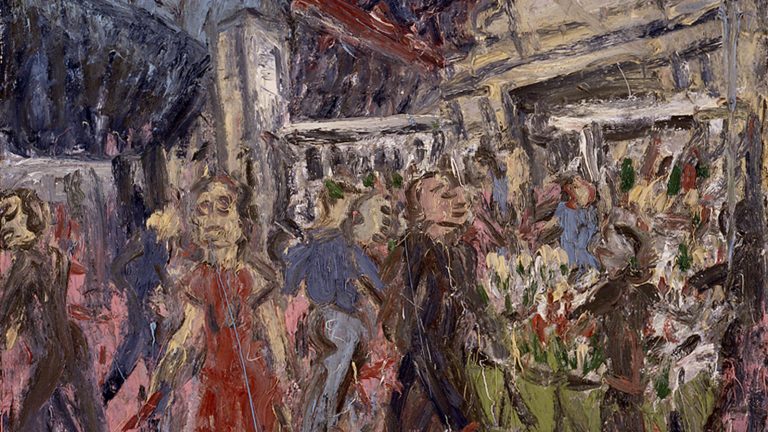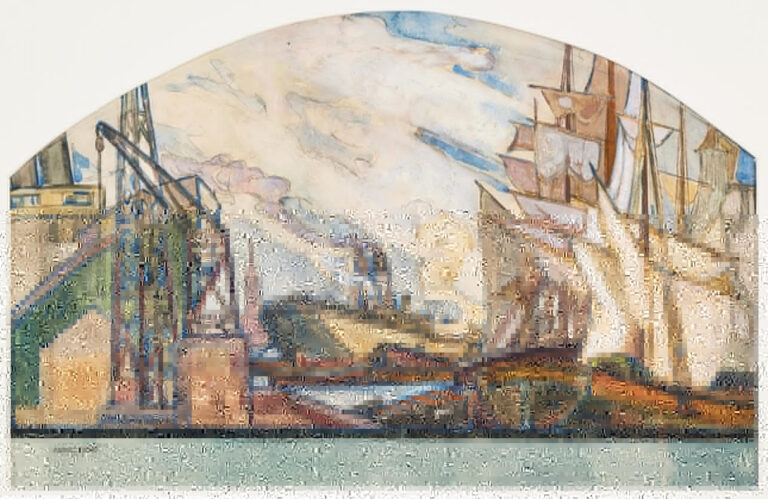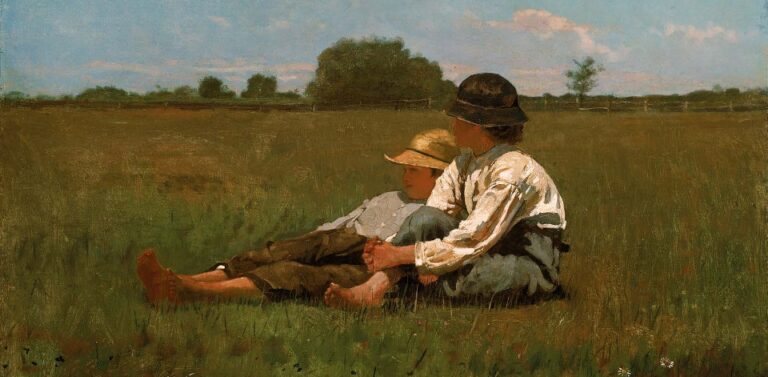John Sloan Painter: A Pioneer of the Ashcan School Movement
Born: August 2, 1871, Lock Haven, Pennsylvania, U.S.
Death: September 7, 1951, Hanover, New Hampshire, U.S.
Art Movement: Ashcan School
Nationality: American
Teacher: Thomas Anshutz
Institution: Pennsylvania Academy of the Fine Arts
John Sloan Painter: A Pioneer of the Ashcan School Movement
Early Life and Career
John French Sloan’s journey as an American painter began in late 19th century Philadelphia. There, he developed skills as an illustrator before moving to New York and establishing himself in the art world.
Philadelphia Roots and Education
John Sloan was born on August 2, 1871, in Lock Haven, Pennsylvania. He spent his formative years in Philadelphia, where his artistic talents began to emerge.
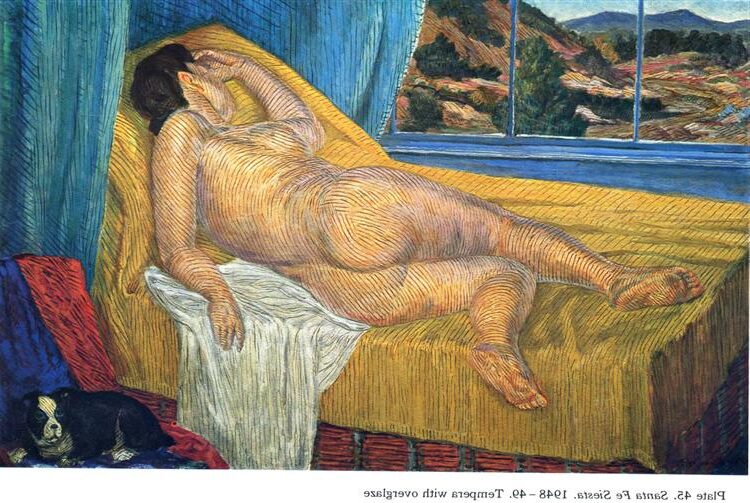
Santa Fe Siesta, 1948–1949, by John Sloan
In 1891, he attended drawing classes at the Spring Garden Institute. This marked his first formal art education.
Rather than pursuing extensive academic training, Sloan developed his skills through practical experience. He began working as a freelance commercial artist, which provided both income and valuable artistic practice.
His career advanced when he secured positions at prominent Philadelphia newspapers. Sloan worked as an illustrator for the Philadelphia Inquirer and later the Philadelphia Press. There, he honed his observational skills capturing everyday scenes.
Transition to New York
In the early 1900s, Sloan made the pivotal decision to relocate to New York City. This move transformed his artistic perspective and career trajectory.
New York’s bustling urban environment provided endless inspiration for Sloan’s work. He became fascinated with depicting ordinary city life and the working-class neighborhoods around him.
During this transition period, Sloan continued supporting himself through illustration work while developing his personal artistic style.
His background in newspaper illustration influenced his painting approach, as he maintained a keen eye for storytelling and human interaction.
This period marked Sloan’s integration into New York’s progressive art circles. These connections helped establish his reputation as an important American artist dedicated to portraying authentic urban experiences.
Artistic Contributions and Styles

Nude, Four Senses, 1929, by John Sloan
John Sloan shaped American art through his realistic portrayals of everyday urban life in the early 20th century. His distinctive painterly style and unflinching perspective on city scenes established him as a significant figure in American realism.
The Ashcan School and ‘The Eight’
John Sloan emerged as a central figure in the Ashcan School, a movement that rejected academic traditions in favor of depicting the raw reality of modern urban life.
Initially working as a newspaper and magazine illustrator, Sloan developed observational skills that would define his artistic approach.
In 1908, Sloan participated in the landmark exhibition of “The Eight” alongside Robert Henri and other like-minded artists. This rebellious group challenged the conservative National Academy of Design by showing unfiltered scenes of city life.
The Ashcan artists, with Sloan as a key member, embraced subjects previously considered unsuitable for fine art. Their work celebrated the vitality and struggles of working-class neighborhoods rather than idealized scenes preferred by the art establishment.
Prominent Themes in Sloan’s Works
Sloan’s paintings captured authentic New York City life with remarkable honesty. He focused on ordinary people in the Tenderloin District, Greenwich Village, and other working-class neighborhoods.
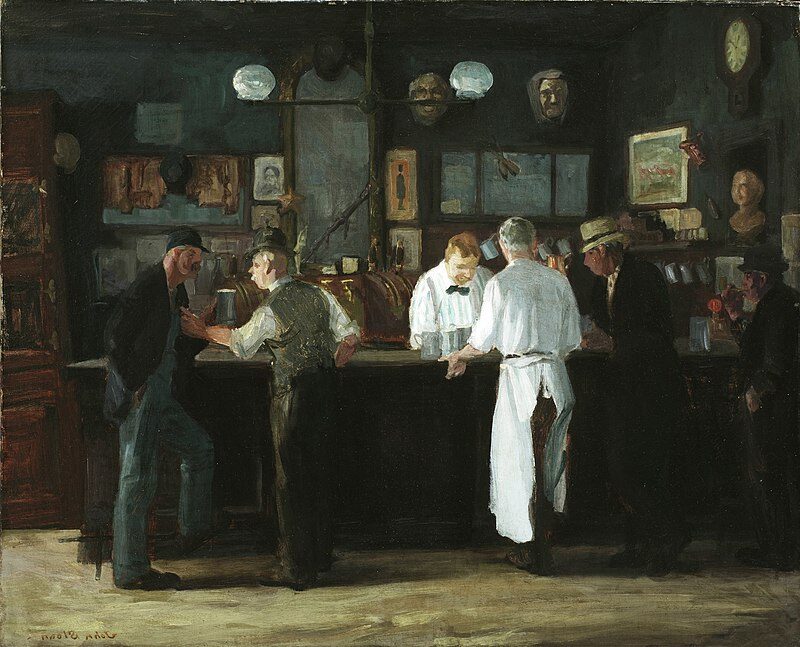
McSorley’s Bar, 1912, by John Sloan
His work often depicted everyday moments: women hanging laundry on rooftops, neighborhood gatherings, and street scenes. Unlike some contemporaries, Sloan avoided overt social criticism, instead presenting unembellished observations of urban reality.
Sloan developed a distinctive style characterized by a dark palette, loose brushwork, and strong compositional skills. After 1909, his approach evolved when he adopted the Maratta color system, as seen in works like “Spring Rain.”
His artistic vision combined documentary-like observation with a painterly aesthetic that valued atmosphere and mood over precise detail.
Expansion into Etchings and Portraiture
Beyond painting, Sloan established himself as a masterful etcher. His etchings documented city life with intimate detail and demonstrated his exceptional draftsmanship.
These prints often featured narrative elements, capturing fleeting moments in urban settings. The medium suited Sloan’s observational approach, allowing him to create works that felt both immediate and timeless.
As an instructor at the Art Students League, Sloan influenced generations of American artists. His teaching emphasized personal observation and authentic expression rather than technical formulas.
Throughout his career, Sloan also created compelling portraits that revealed his subject’s character through his straightforward yet nuanced approach.
Legacy and Influence
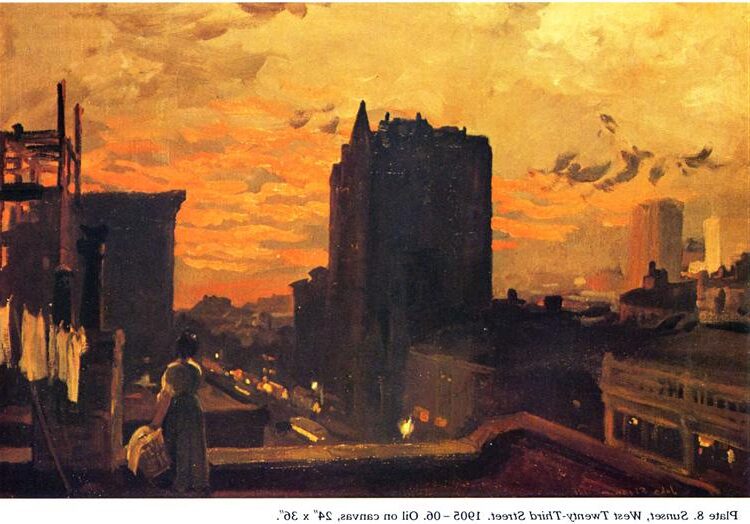
Sunset, West Twenty-Third Street, 1905–1906, by John Sloan
John Sloan’s artistic contributions have left an indelible mark on American art history, particularly through his association with the Ashcan School and his commitment to depicting everyday life with honesty and compassion.
Sloan’s Impact on American Art
As a premier artist of the Ashcan School, Sloan helped shift American art toward social realism and away from academic traditions. His unflinching portrayals of urban life in New York influenced generations of artists who valued authenticity over idealization.
Sloan’s role as art director for the radical publication The Masses (1912-1916) further cemented his legacy as an artist who merged aesthetic concerns with social consciousness. His Socialist principles informed his work without overwhelming its artistic merit.
The 1913 Armory Show, where Sloan exhibited, marked a turning point in American art. Through his leadership in the Society of Independent Artists, he championed artistic freedom and helped create exhibition opportunities for unconventional artists.
Representation in Major Collections
Sloan’s paintings are prominently featured in America’s most prestigious museums. The National Gallery of Art houses significant works in both its West and East Buildings on the National Mall.
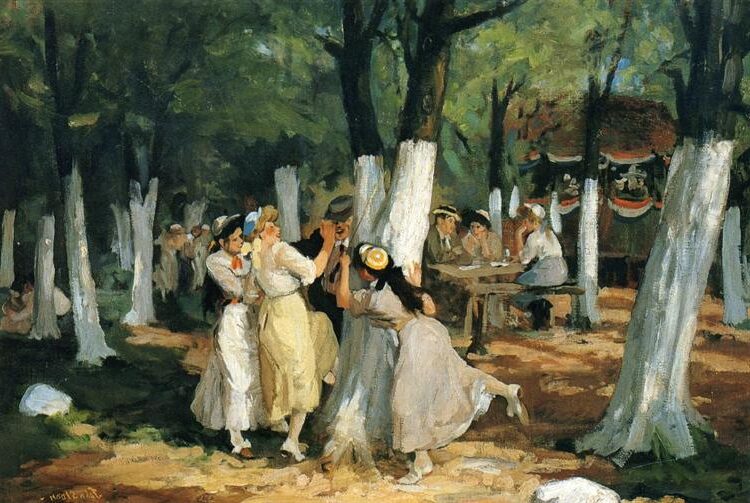
The Picnic Grounds, 1906–1907, by John Sloan
The Metropolitan Museum of Art and the Whitney Museum of American Art in New York maintain substantial collections of his paintings and etchings, recognizing his contribution to American visual culture.
His connection to Santa Fe, where he spent many summers painting, is honored through collections at the New Mexico Museum of Art, which benefited from his active involvement in the local art community.
Pennsylvania Academy collections include early works, reflecting his formative training. His nude studies, cityscapes, and portraits are carefully preserved as vital documents of early 20th-century American realism.
Frequently Asked Questions
John Sloan was a significant figure in American art history who documented urban life with remarkable authenticity. His work continues to inspire interest and questions from art enthusiasts and scholars alike.
What artistic movement is John Sloan associated with?
John Sloan is most closely associated with the Ashcan School, an artistic movement that emerged in the early 20th century. This movement represented a revolution in American art through its unflinching realism.
Sloan and his contemporaries rejected academic traditions and idealized subjects. Instead, they focused on the gritty reality of everyday urban life.
The Ashcan School artists were sometimes called “The Eight” after their landmark independent exhibition in 1908. Sloan’s participation in this group solidified his place in this important American art movement.
How did John Sloan’s depiction of urban life impact American art?
Sloan’s honest portrayal of city life transformed American art by introducing authentic urban scenes as worthy artistic subjects. He painted what he observed without sentimentality or judgment.
His work helped shift American art away from romanticized imagery toward social realism. Sloan captured ordinary moments—people on stoops, in tenements, at work, and at leisure.
This approach influenced generations of artists to consider everyday life as meaningful subject matter. His work helped establish a distinctly American artistic identity separate from European traditions.
What techniques and mediums did John Sloan commonly use in his artwork?
Sloan worked primarily in oil paint, creating canvases filled with rich textures and vibrant cityscapes. His brushwork was often loose and expressive rather than highly detailed.
He was also an accomplished printmaker, producing numerous etchings and engravings. These prints showcased his skill in black and white composition and his ability to capture meaningful moments with minimal lines.
Sloan frequently used sketching as part of his process, observing city scenes directly and recording them in notebooks. These observational sketches often informed his finished paintings.
Where can one see John Sloan’s paintings on display?
Major collections of Sloan’s work can be found at the Whitney Museum of American Art in New York City. The museum houses many significant pieces that showcase his urban realism.
The Delaware Art Museum maintains an extensive collection of Sloan’s paintings and prints. This collection provides a comprehensive view of his artistic development.
Other important works are displayed at the Metropolitan Museum of Art, the Art Institute of Chicago, and the Philadelphia Museum of Art. These institutions regularly feature his paintings in their American art exhibitions.
How did John Sloan contribute to the Ashcan School?
Sloan was a founding member of the Ashcan School, helping establish its core principles of direct observation and honest representation. His commitment to depicting real life was fundamental to the movement.
He served as an influential voice for artistic independence. Sloan advocated for artists to break from academic traditions and paint subjects that mattered to contemporary American life.
Through his teaching at the Art Students League, Sloan passed Ashcan principles to younger generations. His influence extended beyond his own work to shape American art education.
What are the notable themes and subjects in John Sloan’s paintings?
Working-class neighborhoods featured prominently in Sloan’s work. He painted tenement buildings, fire escapes, and rooftops with a sensitive eye for human activity.
Sloan also depicted women’s daily lives as a recurring subject. He offered rare glimpses into female urban experiences of the early 1900s by showing women hanging laundry, shopping, working, and socializing.
Public gathering places like bars, theaters, and parks appeared frequently in his paintings. These scenes captured the social fabric of urban America and the ways people found community and entertainment in the city.

